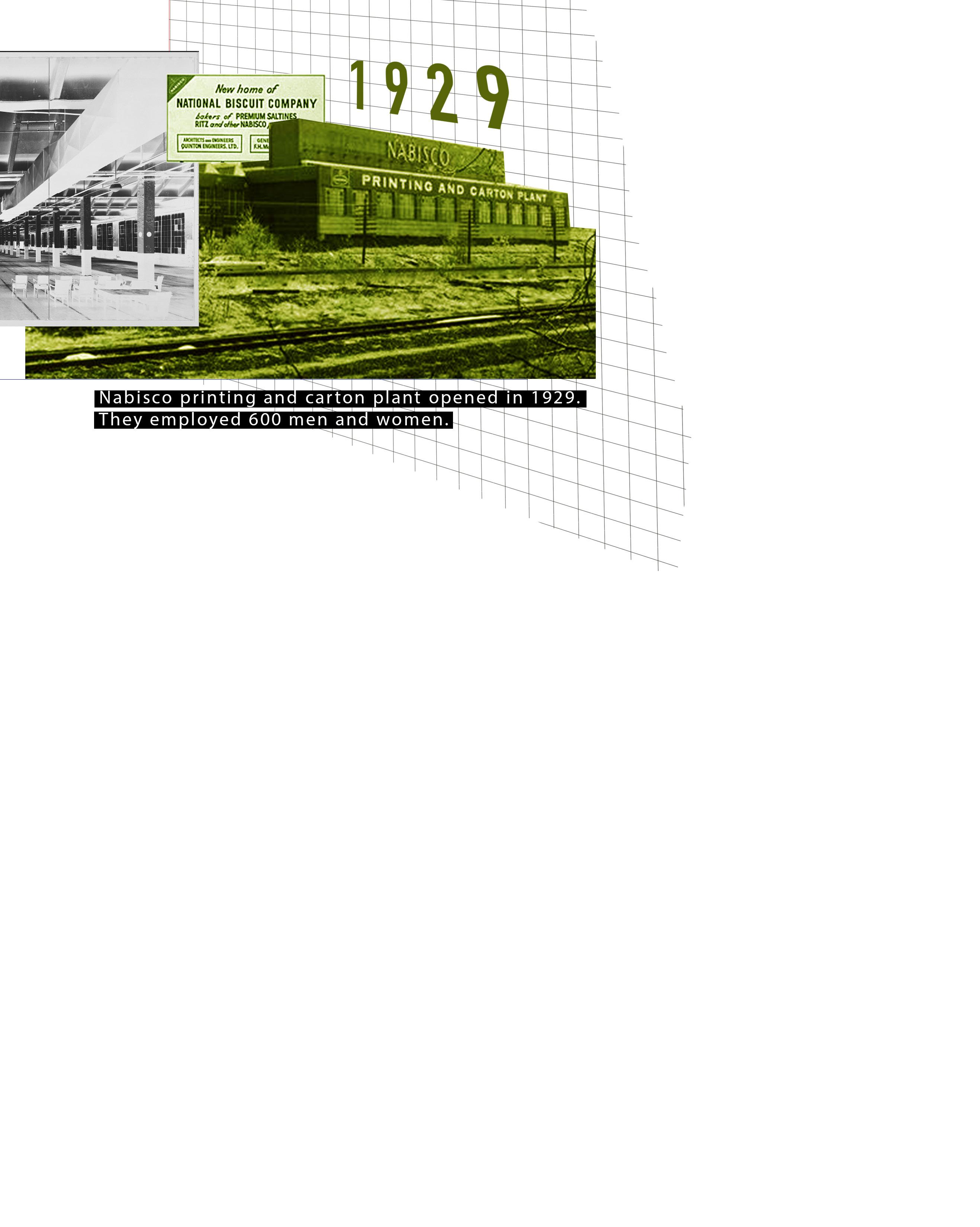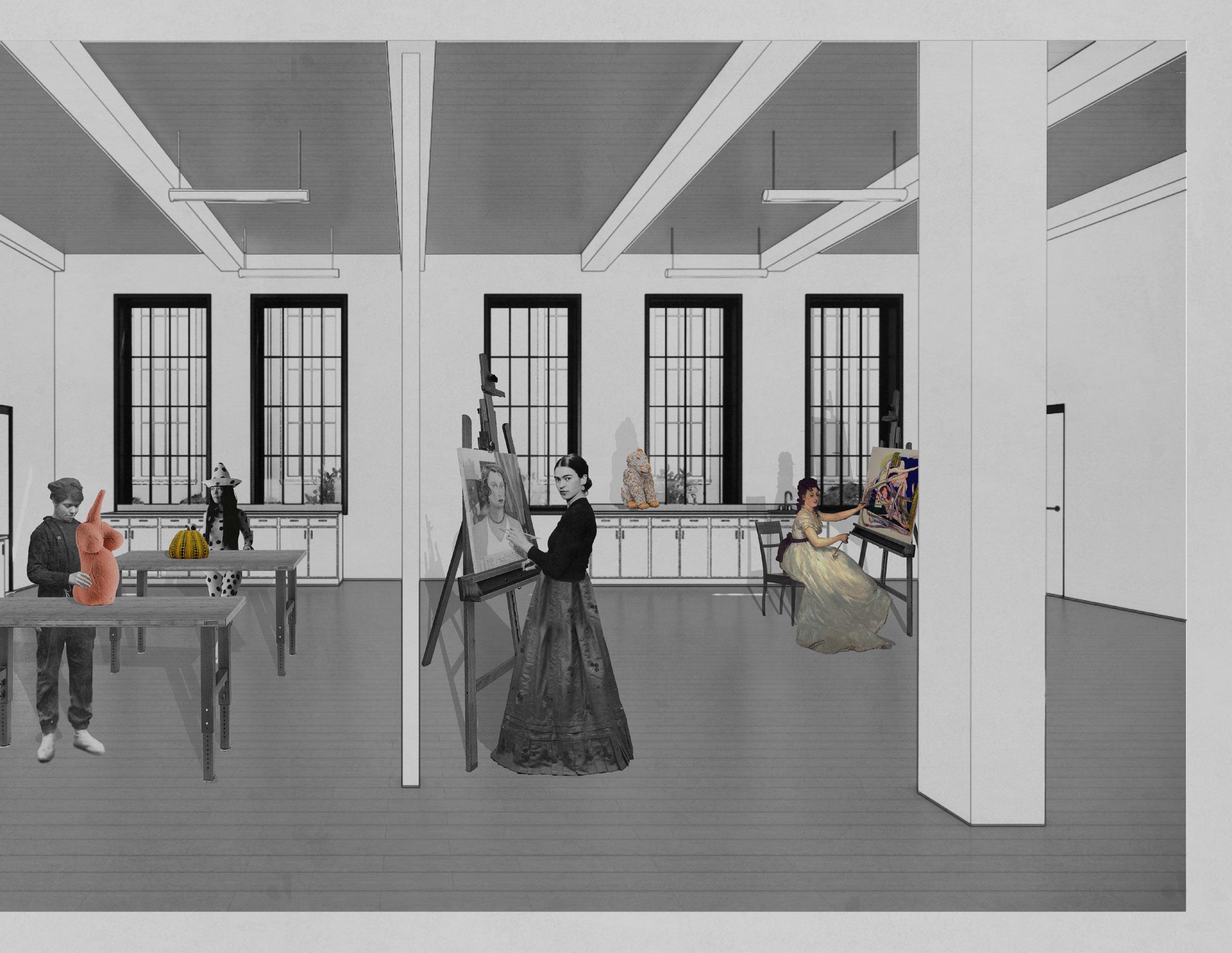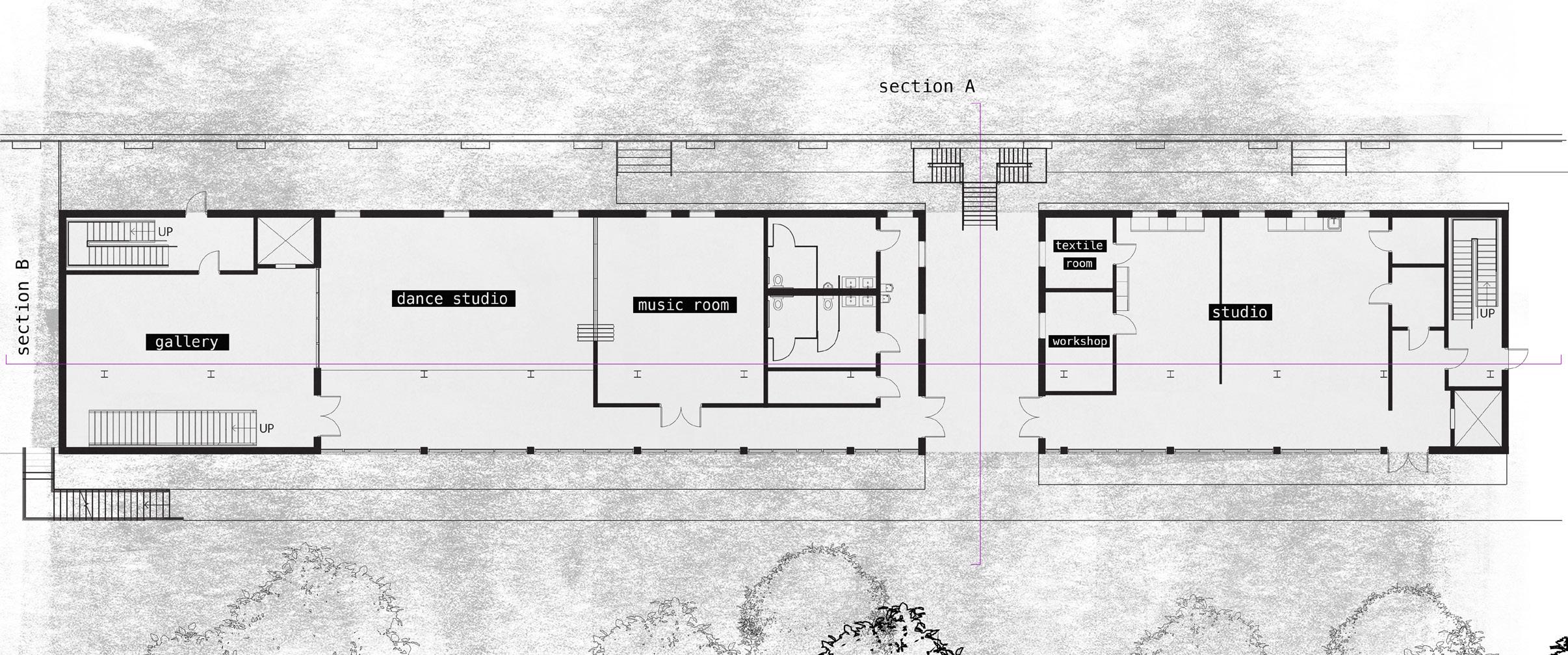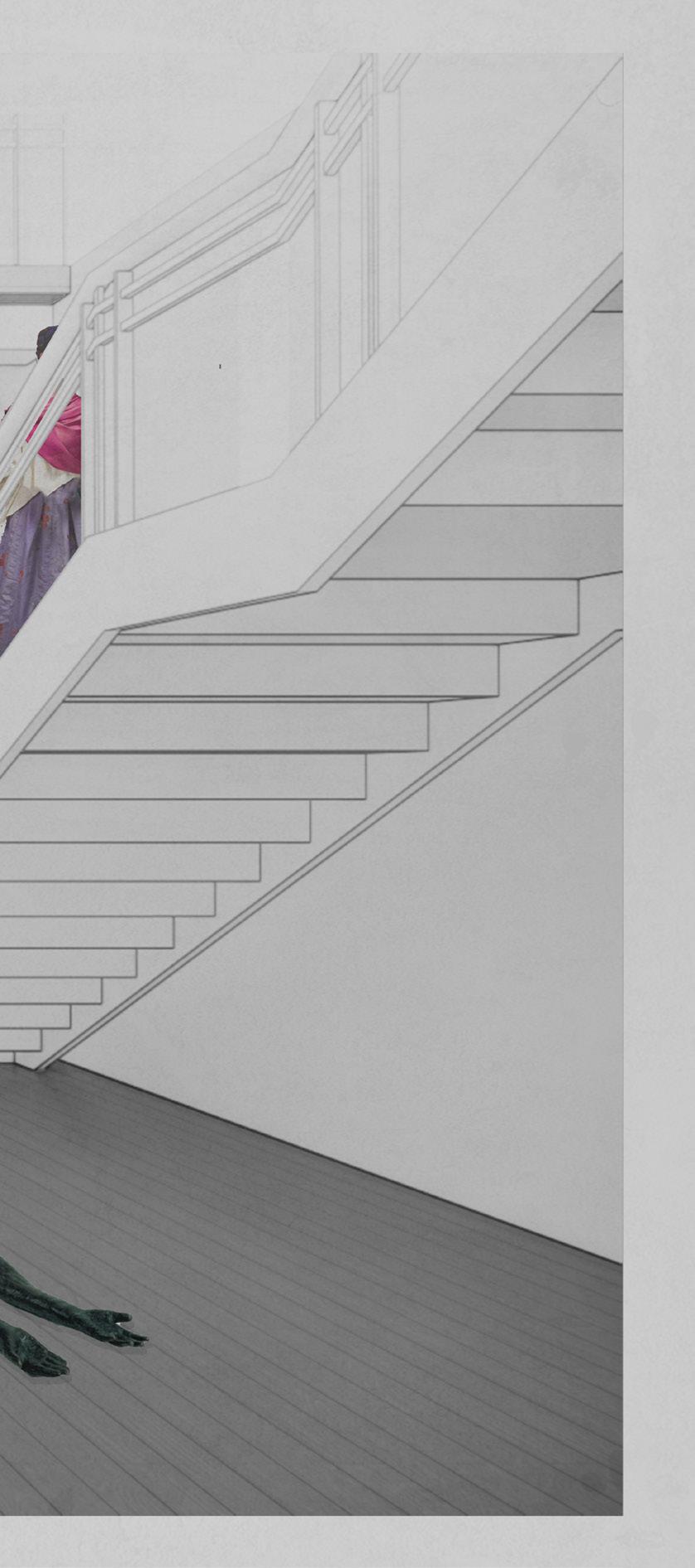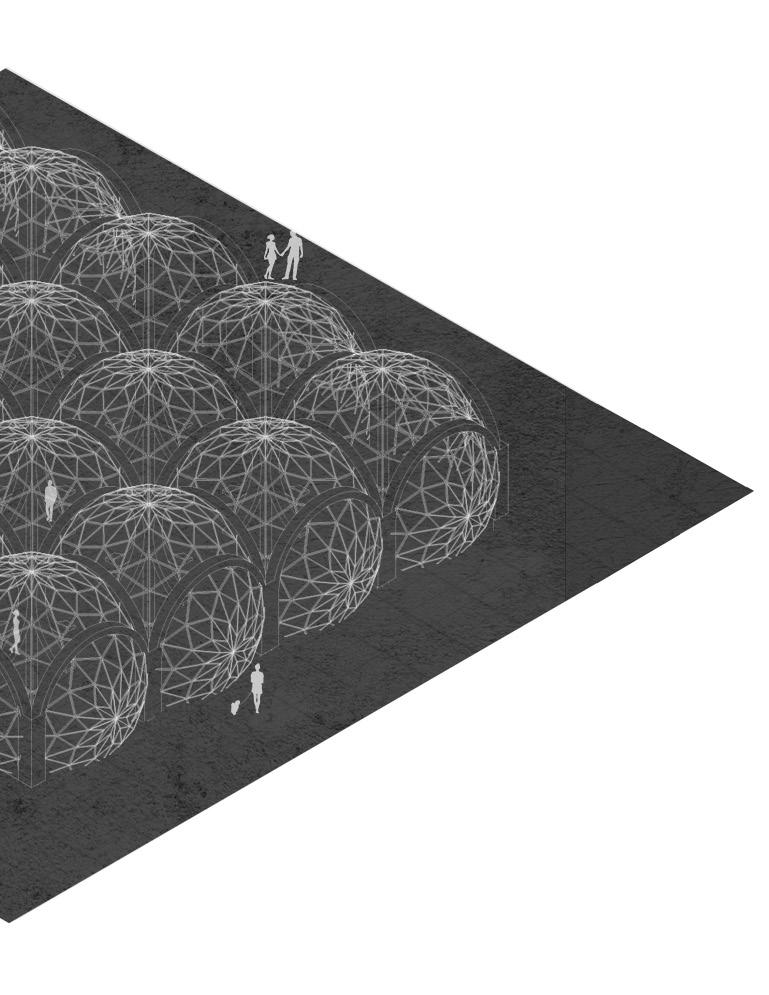ARDEN STAPELLA
SELECTED WORKS 2023

My name is Arden Stapella and I am a currently a fourth year architecture student. Creating and design have always been a part of my life. My devotion to the visual arts has taken many forms over the years from sewing, weaving, embroidery, and stained glass to model making and analytical drawing. These forms and applications of the visual arts has aided my journey in architecture. That explorative component combined with my interests in research, philosophy, and preservation, gives me the determination to create meaningful, innovative, and compelling work.
The work that I have selected to include is a representation of my journey in architecture. It shows me growing into my beliefs on philosophy, art, politics, and greater social issues, and learning how to implement those into my projects.

RETROSPECTION
FALL 2022 | ARCH 401 INTEGRATED STUDIO | PROFESSORS: NATHAN GRIFFITH, BRIAN WARTHEN, NICK LINDSLEY, KHALID KAHN | PARTNER: MIRCEA NASTASE
Retrospection is a social justice center located in Portland Oregon, designed in response to the needs and goals of the non profit organization, The Immigrant Story. Portland has a rich and complex immigration history. For decades, Portland has provided a home and community for a diverse range of immigrant groups from Japan, to China, to Mexico, this fostered a place dense with culture; unfortunately this contribution was not always valued or welcomed. The Immigrant Story seeks to rectify Portland’s historic disregard and underappreciation for the immigrant and refugee population by honoring their tremendous strength and persistence through storytelling. Storytelling has always been a way to nurture empathy and understanding. Retrospection provides a tangible place for this to occur.
The large pillars erected in Tom McCall Waterfront Park serve as a visual reminder to the community of the strong and permanent presence of immigrants in Portland, occupying their space beautifully and powerfully. The grand stature of the pillars are framed by the city grid. As you proceed closer, you are gestured toward the structure by the linear path proceeding from the street, and invited by the stairs to explore below grade. There, you will find a celebration of differences, spaces designed to inspire compassion. It is a space to inform the public of the hardships that these immigrants have endured, the violence and racism, to acknowledge that experience, and recognize them for their courage.










Up the stairs and in the park the ground has been sculpted to form small hills which emanate light from the program below. They give movement to the landscape, mimicking that of the rippling water of the river beside it, inviting onlookers to traverse upon the udulant terrain. Retrospection is an invitation to the community to embrace the diverse heritage of the city and provide recognition to where it is deserved.









